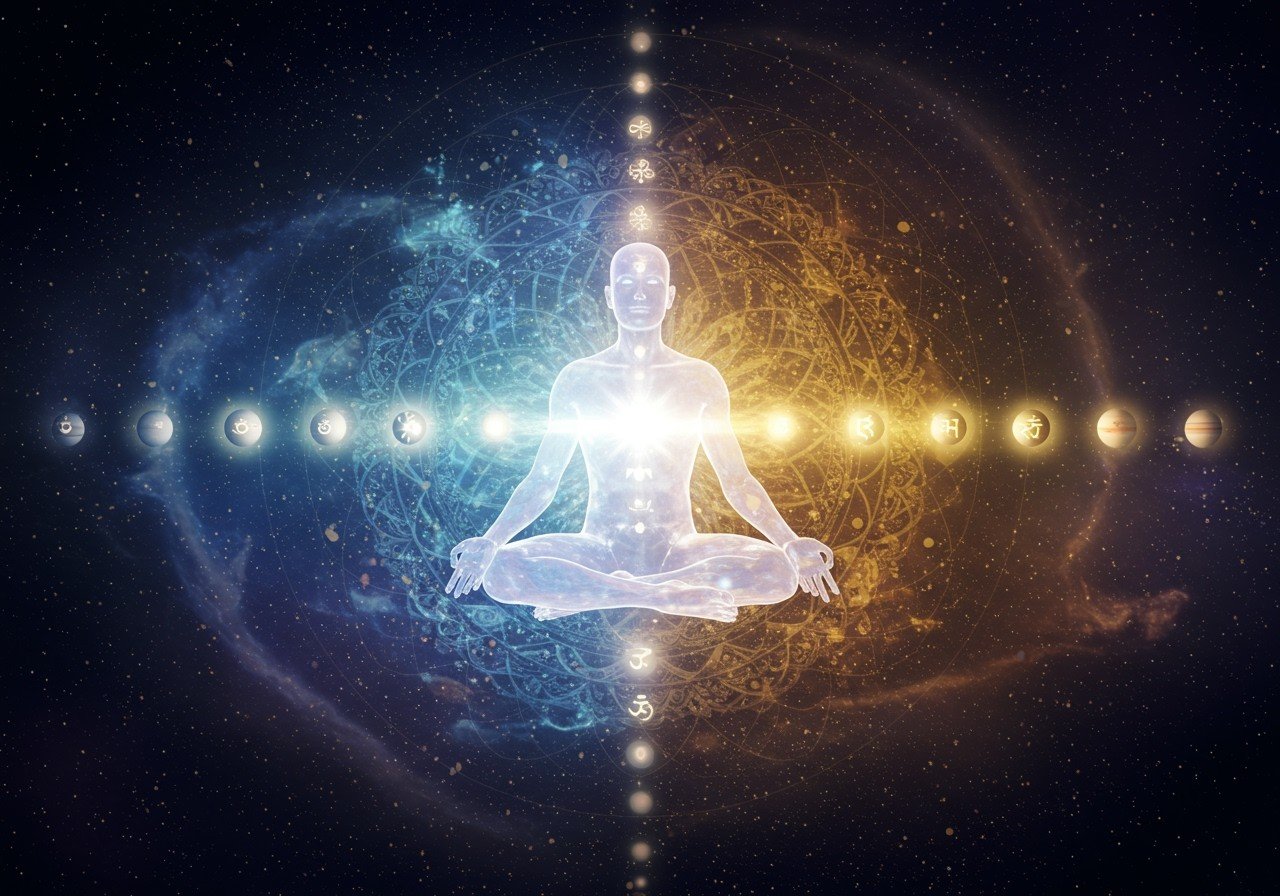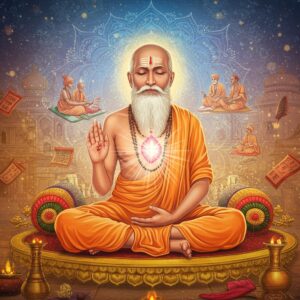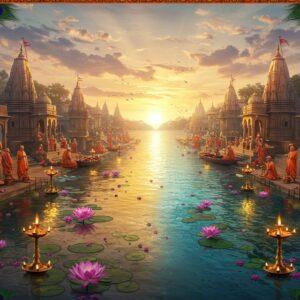Delving into Purusha: The Consciousness in Sankhya Philosophy

In the intricate world of Indian philosophy, Sankhya emerges as a prominent school of thought, presenting a distinctive perspective on reality through the dual concepts of Purusha and Prakriti. This exploration centers around Purusha, a core concept that has intrigued scholars and spiritual seekers for centuries. We will delve into its profound significance within Sankhya philosophy, its interplay with Prakriti, and its comparison with the concept of Atman. This understanding is crucial for anyone seeking a deeper connection with cultural and philosophical traditions.
Understanding Purusha in Sankhya
Purusha, often interpreted as “consciousness” or “spirit,” holds a pivotal position in Sankhya philosophy. It embodies the static, passive, and eternal aspect of reality. Purusha is the observer, the pure consciousness that remains untouched by the material world and its constant fluctuations. In Sankhya’s dualistic framework, Purusha is distinct from Prakriti, the dynamic principle responsible for the universe’s creation and manifestation. Think of Purusha as the silent witness, observing the cosmic drama unfold. This understanding illuminates Purusha’s profound role in the universe.
Purusha assumes a critical role as the witness to Prakriti’s activities. Although passive, Purusha’s presence is essential to the universe’s unfolding. Liberation, or moksha, in Sankhya is attained when Purusha recognizes its inherent separateness from Prakriti, leading to freedom from suffering. This realization underscores Purusha’s non-interference in worldly affairs, maintaining its eternal purity and immutability. Discover deeper insights into liberation by exploring the Hindu scriptures available at Poojn.in. These sacred texts offer a wealth of knowledge on this profound subject.
Purusha and Prakriti: A Cosmic Dance
Sankhya philosophy, a cornerstone of Hindu thought, offers a distinctive view of reality through the lens of Purusha and Prakriti. These two fundamental principles form the basis of this dualistic system. Understanding their dynamic interplay is crucial for grasping the Sankhya worldview. Dive into the fascinating relationship between Purusha and Prakriti, exploring how these two forces interact to shape our understanding of reality.
- Purusha: The Witnessing Consciousness: Purusha, in this framework, embodies pure consciousness or spirit. It exists as the eternal observer, remaining passive and unchanging. Unlike Prakriti, which is active and constantly evolving, Purusha does not participate directly in worldly activities. It stands as the infinite and immutable essence of the soul.
- Prakriti: The Dynamic Force of Nature: Prakriti represents the material world, the force of nature that gives rise to all creation. Unlike Purusha, which is unchanging, Prakriti is dynamic and constantly in motion. It comprises the three Gunas: Sattva (purity), Rajas (activity), and Tamas (inertia). The interplay of these qualities shapes everything we perceive. For a deeper understanding of these concepts, explore the resources on Hindu philosophy available on Poojn.in.
Sankhya acknowledges the existence of multiple Purushas, each distinct and individual, without a hierarchy or a single creator god. This concept emphasizes the individuality of consciousness, setting Sankhya apart from monistic viewpoints like Vedanta. For further exploration of these philosophical concepts, delve into the collection of books and sacred texts at Poojn.in.
Bondage and Liberation: The Purusha-Prakriti Interaction
The relationship between Purusha and Prakriti defines the very nature of existence in Sankhya. Their interplay explains the bondage of the soul and its eventual liberation. Jiva, in this context, signifies the living being in which Purusha is bound to Prakriti. This union gives rise to suffering and ignorance. Journey through the concepts of bondage and liberation, discovering the path to freedom from suffering in Sankhya.
- Avidya: The Root of Bondage: Sankhya identifies avidya, or ignorance, as the fundamental cause of this bondage. It traps Purusha within Prakriti’s web, leading to worldly attachments and the cycle of suffering. Break free from the cycle of suffering by understanding the nature of Avidya. Poojn.in offers a selection of incense and spiritual tools to enhance your meditative practices and deepen your understanding of these concepts.
- Moksha: The Path to Liberation: Liberation, or moksha, arises when Purusha recognizes its true nature as distinct from Prakriti. This realization brings about freedom from material entanglement and the cycle of birth and death. Embark on a journey towards self-realization with guidance from Poojn.in. Connect with spiritual guides and explore a wide range of resources designed to support your path.
Purusha vs. Atman: A Philosophical Comparison
Purusha and Atman stand as pivotal concepts in Indian philosophy. While both relate to the self, they are understood differently across various schools of thought, particularly Sankhya and Vedanta. In Vedanta, Atman represents the universal self, often equated with Brahman, the ultimate reality. This monistic perspective contrasts with Sankhya’s pluralistic view, which posits the existence of numerous individual Purushas.
Purusha in Yoga: A Practical Application
Yoga, deeply influenced by Sankhya philosophy, integrates the concept of Purusha into its practices. In Patanjali’s Yoga Sutras, Purusha represents the true self, the essence of being. Yoga strives to quiet the fluctuations of the mind, revealing the inherent nature of Purusha. Explore the role of Purusha in Yoga, discovering how this ancient practice can lead you towards self-realization. Plan your spiritual retreat at an ashram with the help of Poojn.in, immersing yourself in the practice and philosophy of Yoga.


